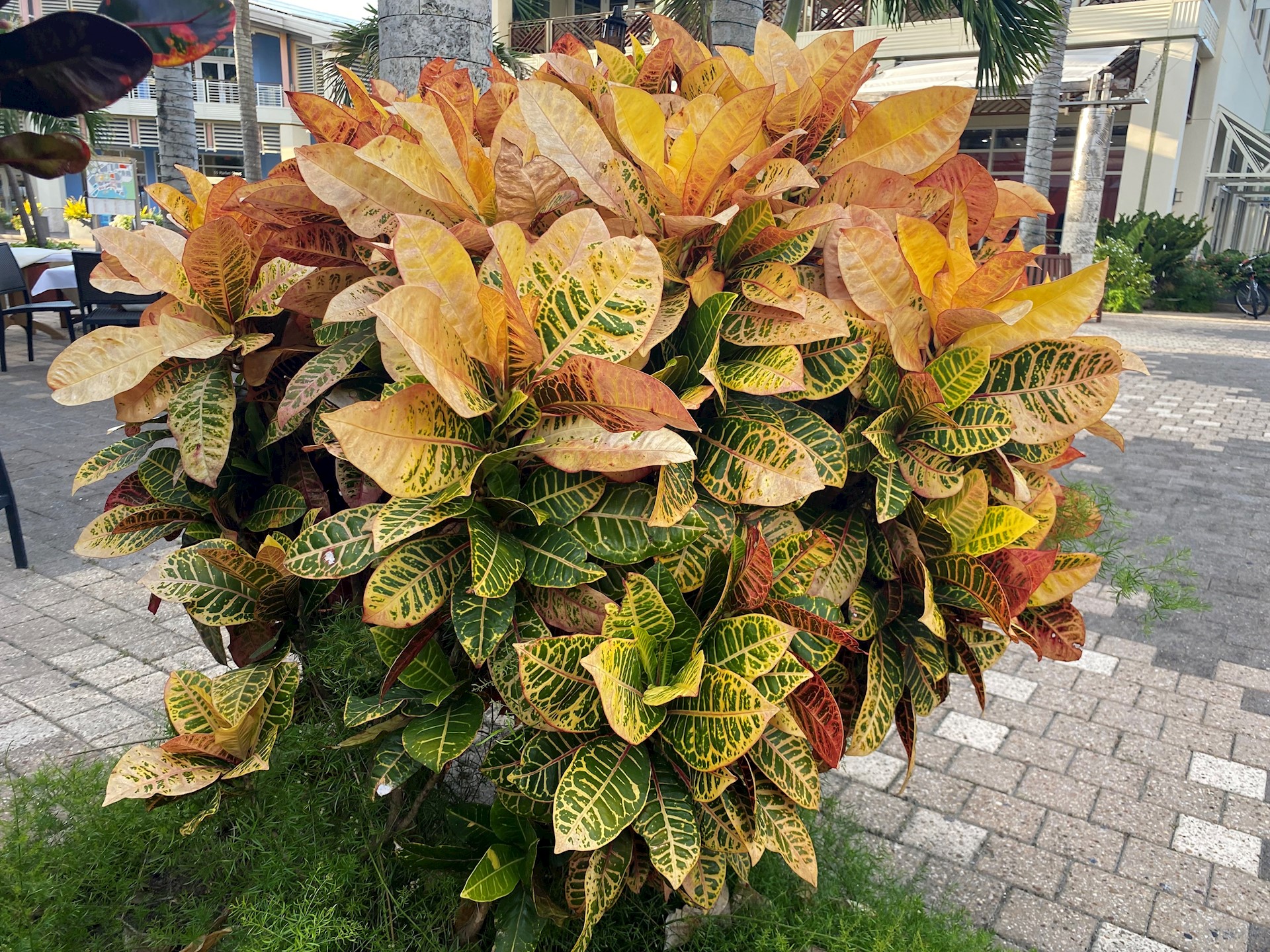

Among the many perks to living on these verdant Cayman Islands is the fact that we don’t have to deal with the severity of seasonal changes that others experience in more temperate climates. Autumn in those cooler climates may still be beautiful, while the deciduous trees hold on to the last of their brightly coloured leaves for the year, but in the background looms winter, which can be dark, exceedingly long, and cold.
Despite autumn's reminder that winter is coming, some people may miss the range of outdoor colours that occur during the fall. For those who long for hilltops covered in red, orange and yellow, Joseph’s coat — or Codiaeum variegatum var. pictum — is a plant for you. Even better, you'll get to see its showy colours all year round.
Joseph’s coat, which is also called garden croton or variegated croton, is not known for its flowers, but for its brilliant foliage colours and shapes.

With over 100 varieties to chose from, garden crotons can add a spectacular burst of colour, a bold contrast or an exotic focal point in any garden. This evergreen shrub comes in practically every colour except blue, and most varieties have multiple colours on each leaf.
The variegated leaves are shiny, with a leathery feel, and have a wide range of shapes: oval, curly, oak and even linear. The flowers are fairly insignificant, but nevertheless add another charming attribute to this stunner of a plant. The whitish/yellow racemes bloom from time to time at the end of the stems.
Joseph's coat is native to Malaysia, the Pacific Islands and northern Australia, and is likely to show up in any semi-tropical or tropical location across the globe as an ornamental. This woody shrub can reach heights of 6 feet, with a similar spread, and performs best in full sun to part shade.
The amount of sunlight it receives has a direct effect on how bright the leaves will get, but it will tolerate some shade. Preferring a well-drained semi-humus soil and humid conditions, Joseph's coat is an ideal specimen for Cayman. It will tolerate, and in some instances prefers, to be on the dry side during the winter months, but should be kept evenly moist during the summer.
Some of the more notable and popular varieties are "petra," "mammy," "Zanzibar" and "gold dust."
Joseph’s coat can be found in several locations across Camana Bay, but there is a particularly striking grouping along the Paseo, including an astonishing petra near Abacus.
This article was originally featured in the November 2021 print edition of Camana Bay Times.

About the author
Shannon Schmidt is a horticulture manager at Dart’s Arboretum Services Ltd. Joining Dart in 2012, Shannon previously worked in parks, public gardens and tourism properties, among others. Originally from the Finger Lakes region of New York State, Shannon loves island life, spending time paddleboarding around the canals and mangroves, in the sea, and spending time outdoors with her two energetic Boston Terriers Nollie and Ebbie and her equally energetic partner Chase! Shannon holds a Bachelor of Science in Recreation, Park and Tourism Management from The Pennsylvania State University and a Diploma in Horticulture from the Longwood Gardens Professional School of Horticulture, and loves spending time swinging in a hammock, with her favourite smoothie from Jessie’s Juice Bar and reading material from Next Chapter.